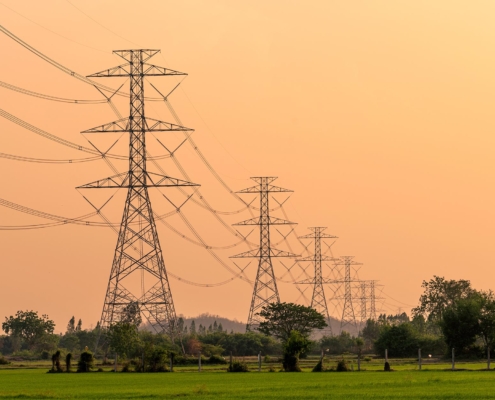 https://www.lwwco.com/wp-content/uploads/2024/02/Electrical-lines-in-rural-area.jpg
1250
2000
Abstrakt Marketing
/wp-content/uploads/2022/10/Lyle-Logo.png
Abstrakt Marketing2024-02-08 10:00:002025-01-01 13:30:23The Top Challenges Facing Rural Electric Cooperatives
https://www.lwwco.com/wp-content/uploads/2024/02/Electrical-lines-in-rural-area.jpg
1250
2000
Abstrakt Marketing
/wp-content/uploads/2022/10/Lyle-Logo.png
Abstrakt Marketing2024-02-08 10:00:002025-01-01 13:30:23The Top Challenges Facing Rural Electric CooperativesAdopting Electrical Building Codes for 2023
The National Electrical Code (NEC) is a critical part of electrical safety in commercial occupancies. The NEC is the most important and widely accepted document for the safe installation of electrical systems, used in all states to protect people from the hazards associated with electricity use. Businesses must stay up-to-date with their local electrical codes to maintain a safe environment for employees and customers. In this blog post, we will explore the importance of NEC enforcement, changes in the electrical code for 2023, where the NEC is in effect, and the consequences of falling behind on electrical safety.
Why Does NEC Enforcement Matter?
The NEC is enforced by building inspection authorities throughout the United States. When businesses follow these regulations and keep up with any changes to the code, they can ensure that their electrical systems are safe, compliant, and reliable. Many of the requirements detailed in the NEC are based on industry best practices for electrical safety, performance, and reliability.
So why is it essential for business owners to follow along with changing code editions? Because updating your facility with new technology or equipment is much easier when you’re not trying to do it while following an old set of regulations. You become a more competitive force in your field and vastly reduce the risk of injury or death due to electrical accidents for you and your end users.
What Are the Consequences of Falling Behind on Electrical Safety?
Failing to comply with the National Electric Code can have many dangerous consequences. These are not only limited to the property owner, but can also affect anyone working in or around a compromised electrical system.
Electrical fires are one of the most common safety hazards when a building fails to meet the NEC code, causing significant property damage and potential loss of life. A similarly regular danger is improper wiring, which can cause shocks, electrocution, and other potentially fatal accidents. With a simple dedication to the NEC and its changing rules, you can save yourself time, money, and controversy.
How Often Do Electrical Building Codes Change?
The NEC is constantly evolving to help ensure electrical safety in all commercial occupancies, from retail stores and restaurants to schools and hospitals. The code changes every three years to give designers, contractors, code officials, and product manufacturers the time to understand the new requirements and adjust their standards accordingly. With periodic changes, the electrical industry has ample space to adapt to new technology, construction methods, and other vital issues.
The NEC is a lot to explore alone. Lyle W. Williams Company offers resources and products to make contractors’ and engineers’ jobs easier.
Where Is the Electrical Building Code in Effect?
As of early 2023, the 2020 National Electrical Code is enforced in 25 states, with 17 more abiding by the 2017 version. Additionally, two regions operate on 2014 NEC guidelines, and two others remain committed to 2008 specifications.
The NFPA Standards Council published the 2020 edition of the NEC back on August 5th, 2019. Come August 25th that year it was ready for government bodies at all levels to begin incorporating its new guidelines into their electrical installation regulations.
The State of the NEC in the Northwest Mountain Region
The National Electric Code is the standard for electrical safety in all 50 states. Each state may have its own unique building codes, but the NEC is the base requirement for all of them. In Oregon and Washington, for example, both states have adopted the latest version of the code. This includes changes to fire alarm systems, hazardous locations, and other safety requirements specific to commercial occupancies.
Many states in the Northwest are in the process of updating their policies to reflect the latest changes in the NEC. Here’s a brief look at the NEC code update process in progress:
- Alaska – 2020
- Idaho – 2017 to 2020 update process underway
- Montana – 2020
- Nevada – 2020
- Oregon – 2021 to 2023 update process underway
- Utah – 2020
- Washington – 2020 to 2023
- Wyoming – 2020 to 2023
How Recent Are Oregon Building Codes for Electrical Safety?
n Oregon, the Building Codes Division (BCD) of the Department of Consumer and Business Services updates and enforces the National Electrical Code (NEC) every three years. As of February 1, 2023, Oregon has adopted the 2020 NEC with an update process underway for the 2023 set of regulations.
There are no exemptions or exceptions to this requirement. Businesses located in Oregon must abide by these codes to ensure electrical safety in their building and facility systems. Compliance is required for both building occupants and property owners.
How Up to Date Are the Washington Building Codes?
Washington State is also updating building codes from the 2020 NEC to the new 2023 set and enforcing them with an effective date of 7/1/2023. The Washington State Building Code Council (WSBCC) approves and updates the codes. Like Oregon, Washington has no exemptions or exceptions to this requirement, so all businesses in the state must comply with these new regulations.

Electrical Building Codes to Watch in Your State
The NEC is constantly changing, so staying on top of the updates and ensuring that your facility is up-to-date is crucial. Whether your state is updating its code this year or sticking with an older ruleset, be sure to know what has changed.
Here are a few impactful changes from the 2020 NEC code that may remain relevant:
Cable Trays: Securing and Supporting
Cable ties are acceptable to secure and support conductors and cables in a cable tray. The 2020 NEC updates its regulations with a new provision (4) for Section 392.30(B): the use of cable ties to hold and sustain conductors and cables in cable trays is allowed, as long as these are certified for the job at hand and can guarantee safe attachment and backing. Cables laid out on trays must always be fastened firmly in place by the tray’s structure.
Cable Trays: Expansion Splice Plates
In the 2020 National Electric Code, Article 392 established a new regulation: Section 392.44. This mandate states that expansion splice plates must be implemented for cable trays to accommodate their thermal contractions and expansions. To ensure your system is sound, it’s essential to bear in mind the effects of temperature shifts on the run size—it will help determine how many expansion splice plates you need.
Indicating Requirements for Switches
Now, general-use switches, motor-circuit switches, circuit breakers and molded case switches must clearly show their open (off) or closed (on) status in a spot easily visible when you access the outside operating mechanism. If the handle is used in a vertical direction instead of being rotated or moved side to side, then its ‘up’ position indicates it’s in the closed (on) state.
Electrical Power and Lighting Systems
Permanently installed interior lighting fixtures must be controlled with either a dimmer, occupant sensor control or other mechanism installed or built into the fixture. Lighting controls aren’t required for the following:
- Bathrooms
- Hallways
- Lighting designed for safety or security
Navigate NEC Compliance With Lyle W. Williams Company
When it comes to electrical safety, collaboration is critical. The Lyle W. Williams Company provides the highest quality of service and expertise in the industry regarding the NEC. Our dedicated team of highly-qualified professionals is here to help contractors and engineers navigate the ever-changing requirements of the NEC and its impact on your projects and market.
Related Postings
 https://www.lwwco.com/wp-content/uploads/2024/02/Electrical-lines-in-rural-area.jpg
1250
2000
Abstrakt Marketing
/wp-content/uploads/2022/10/Lyle-Logo.png
Abstrakt Marketing2024-02-08 10:00:002025-01-01 13:30:23The Top Challenges Facing Rural Electric Cooperatives
https://www.lwwco.com/wp-content/uploads/2024/02/Electrical-lines-in-rural-area.jpg
1250
2000
Abstrakt Marketing
/wp-content/uploads/2022/10/Lyle-Logo.png
Abstrakt Marketing2024-02-08 10:00:002025-01-01 13:30:23The Top Challenges Facing Rural Electric Cooperatives https://www.lwwco.com/wp-content/uploads/2024/02/Professional-adjusting-cables-in-electrical-box.jpg
1250
2000
Abstrakt Marketing
/wp-content/uploads/2022/10/Lyle-Logo.png
Abstrakt Marketing2024-02-08 09:00:002025-01-01 13:30:23Exploring Cutting-Edge Solutions in Commercial Electrical Contracting
https://www.lwwco.com/wp-content/uploads/2024/02/Professional-adjusting-cables-in-electrical-box.jpg
1250
2000
Abstrakt Marketing
/wp-content/uploads/2022/10/Lyle-Logo.png
Abstrakt Marketing2024-02-08 09:00:002025-01-01 13:30:23Exploring Cutting-Edge Solutions in Commercial Electrical Contracting https://www.lwwco.com/wp-content/uploads/2024/01/Wiremold-Charging-Solutions.jpg
1250
2000
Abstrakt Marketing
/wp-content/uploads/2022/10/Lyle-Logo.png
Abstrakt Marketing2024-01-15 11:53:492025-01-01 13:30:23How to Find Success Through Electrification
https://www.lwwco.com/wp-content/uploads/2024/01/Wiremold-Charging-Solutions.jpg
1250
2000
Abstrakt Marketing
/wp-content/uploads/2022/10/Lyle-Logo.png
Abstrakt Marketing2024-01-15 11:53:492025-01-01 13:30:23How to Find Success Through Electrification 
About Us
Lyle W. Williams Company is an electrical manufacturer representative with over 50 years of experience in the field. We build electrical pathways to elevate our industry partners.
